A "Triad" is a three note chord. In traditional music theory, there are four triad chord types: major, minor, diminished, and augmented. Contemporary triads include sus and add.
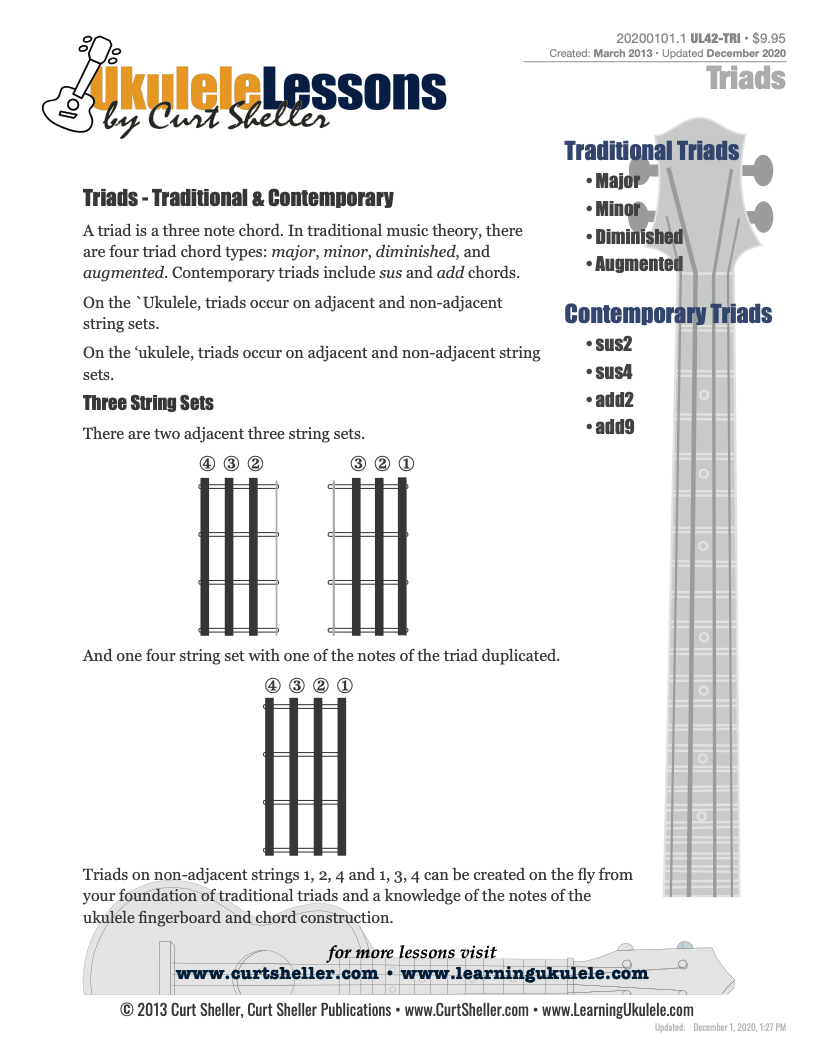



A triad is a three note chord. In traditional music theory, there are four triad chord types: major, minor, diminished, and augmented. Contemporary triads include sus and add.
Available for Premium Site Access Plans Only
On the ukulele, triads occur on adjacent and non-adjacent three string sets.

In music theory, there are four traditional triad chord types: major, minor, diminished, and augmented. And four contemporary triad chord types: sus2, sus4, add2, add9.
In the traditional triads built in thirds, the sus, or suspension, always referred to the fourth's inherent nature to resolve down to the third of the triad. And, always did resolve to the third. In contemporary harmony, we have excepted that the suspension can be delayed or not happen at all.
With all that being said, there really is no such thing as a sus2 chord. As, traditional triad built harmony, there is no suspension between the second and the third in traditional harmony.
You already know triads if you know the basic open position chords such as C, F, G, Am, Dm, etc… If there's no 7 or 5 in the name, they're most likely triads, maybe with one of the notes doubled. An example would be typical open position C. C is C E G with the C doubled.
A triad is a three note chord. In traditional music theory, there are four triad chord types: major, minor, diminished, and augmented. Contemporary triads include sus and add.
Available for Premium Site Access Plans Only
On the ukulele, triads occur on adjacent and non-adjacent three string sets.

In music theory, there are four traditional triad chord types: major, minor, diminished, and augmented. And four contemporary triad chord types: sus2, sus4, add2, add9.
In the traditional triads built in thirds, the sus, or suspension, always referred to the fourth's inherent nature to resolve down to the third of the triad. And, always did resolve to the third. In contemporary harmony, we have excepted that the suspension can be delayed or not happen at all.
With all that being said, there really is no such thing as a sus2 chord. As, traditional triad built harmony, there is no suspension between the second and the third in traditional harmony.
You already know triads if you know the basic open position chords such as C, F, G, Am, Dm, etc… If there's no 7 or 5 in the name, they're most likely triads, maybe with one of the notes doubled. An example would be typical open position C. C is C E G with the C doubled.
Core `Ukulele Chords, Traditional and Contemporary Triads
The Basic Open Position chords such as C, F, G, Am, Dm, etc… are triads or have a triad as their foundation.
Triads are the overwhelming the majority of chords we play.

Open Position: C
Using an open position C major chord as an example. The notes of the chord, from nose to toes are: G C E C. The C major chord is the notes C E G. This gives us the triad on strings 3 2 1 while doubling the C an octave higher on string one
The movable A/B♭ for at fret (3) is C, the notes: C E G C. This version again has a double C — the same C note if using a high G tuning. However the the E, G notes in the middle string 3 and 2 give us a full triad on the 3, 2, 1 string set as well as the 4, 3, 2 string set.
.png)
Movable A/Bb
at fret (3): C
When using a high G, C Tuning, both triads are the same voicing as the C on string four is the same C on string one. With a Low G, C Tuning, the C one string one is one octave higher than the C on string four.
Triads can be used Harmonically as chords and Melodically as single notes. Triads are an excellent way to get started with creating melodic solos and improvising.
For a major scale, I have students memorize this sequence of the triad types in a major scale: major, minor, minor, major, major, minor, diminished. This sequence with knowing the notes of any major scale will get you the chords ( triads ) for that scale. For the C major scale, the chords are C, Dm, Em, F, G, Am, Bdim. For Db major, the chords are Db, Ebm, Fm, Gb, Ab, Bbm, Cdim. This sequence works for any major scale or mode of a major scale. For D Dorian, the chords are: Dm Em F G Am Bdim C. Simply start on the second chord of the C major scale chord sequence.
Memorize this mantra…
maj , min , min , maj , maj , min , dim
With this mantra, the sequence of triads, You'll be able to discern the names of the triads in any of the 15 Major Scales .
Related Lessons, Videos, Lesson Series, Songs, Books & Reference Charts, Resources & Assets, Workshops are below.
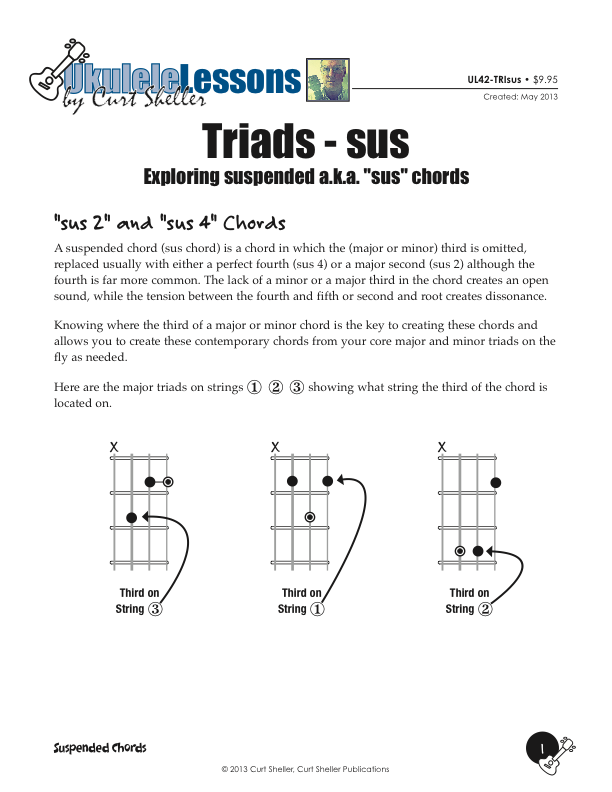
A triad is a three note chord. In traditional chord theory there are four traditional triad chord types: major, minor, diminished and augmented. And four contemporary triad chord types: sus2, sus4, add2 and add9.
This series of lessons explores contemporary suspended or sus chords using triads cover is earlier lessons of this series.

A triad is a three note chord. In traditional chord theory there are four traditional triad chord types: major, minor, diminished and augmented. And four contemporary triad chord types: sus2, sus4, add2 and add9. This series of lessons explores contemporary add chords using triads covered in earlier lessons of this series.
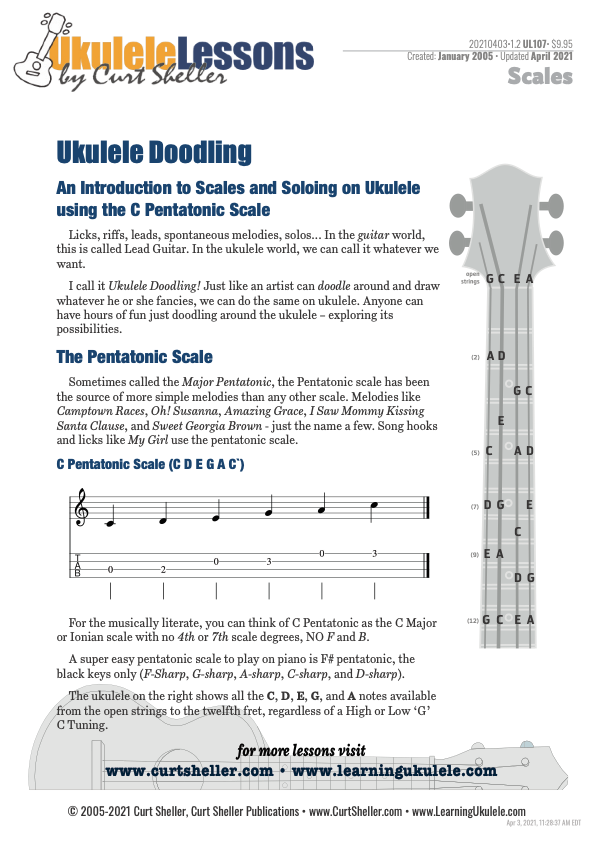
An "Introduction to Scales and Soloing on Ukulele" using the C Pentatonic Scale. Taking what you might already know and using it in different ways. Exploring the entire ukulele fingerboard have hours of fun just doodling around and exploring the ukulele's possibilities.

Using Augmented Triad Arpeggios - Plus One for Creating Melodic Solos. With chord tones, the notes of a chord playing a predominant role in writing melodies and in improvised melodies. The triad plus one additional note is a great melodic device for creating melodies - either written or improvised.
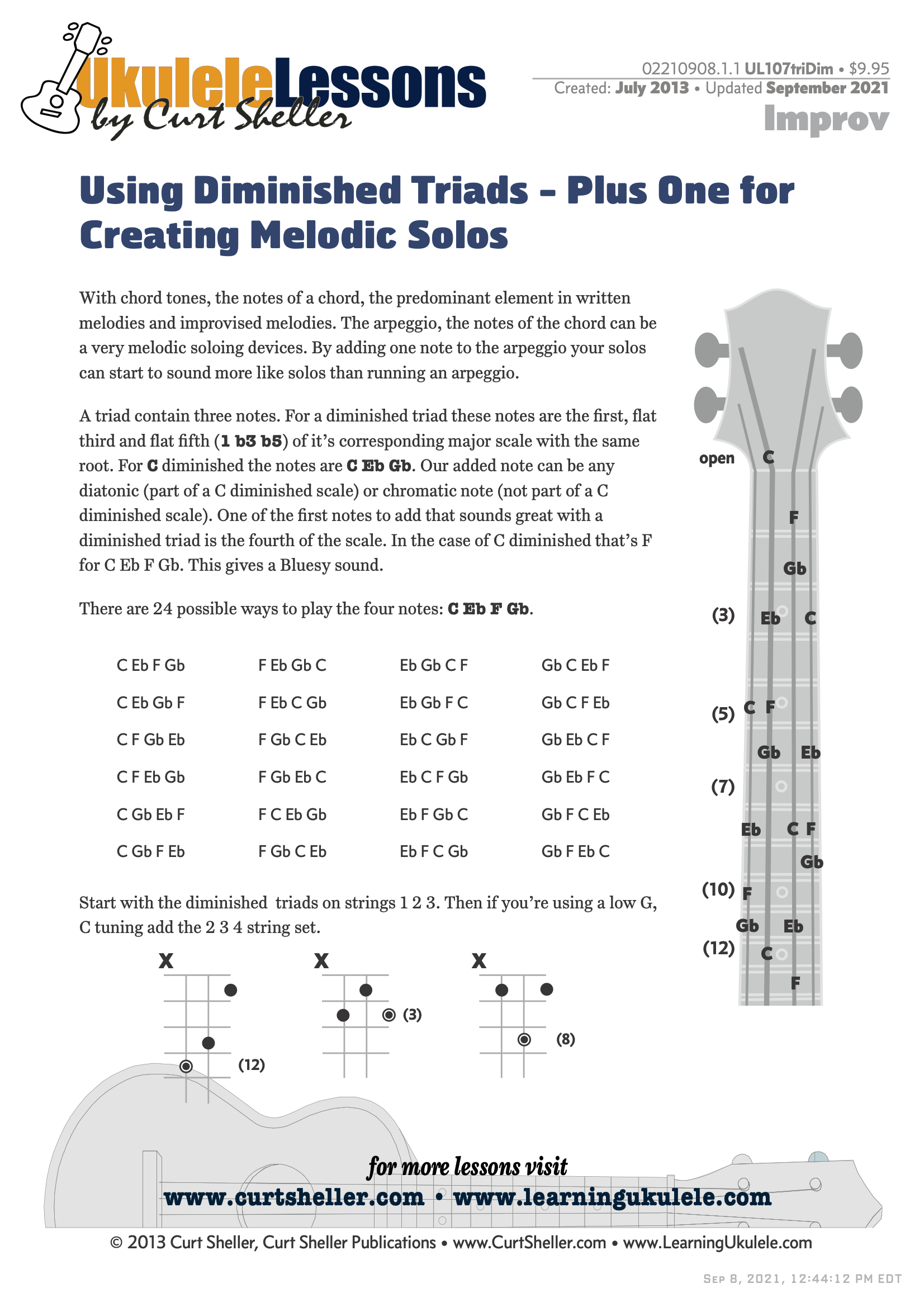
Using Diminished Triad Arpeggios - Plus One for Creating Melodic Solos. With chord tones, the notes of a chord playing a predominant role in writing melodies and in improvised melodies. The triad plus one additional note is a great melodic device for creating melodies - either written or improvised.

Using Major Triad Arpeggios - Plus One for Creating Melodic Solos. With chord tones, the notes of a chord playing a predominant role in writing melodies and in improvised melodies. The triad plus one additional note is a great melodic device for creating melodies - either written or improvised.
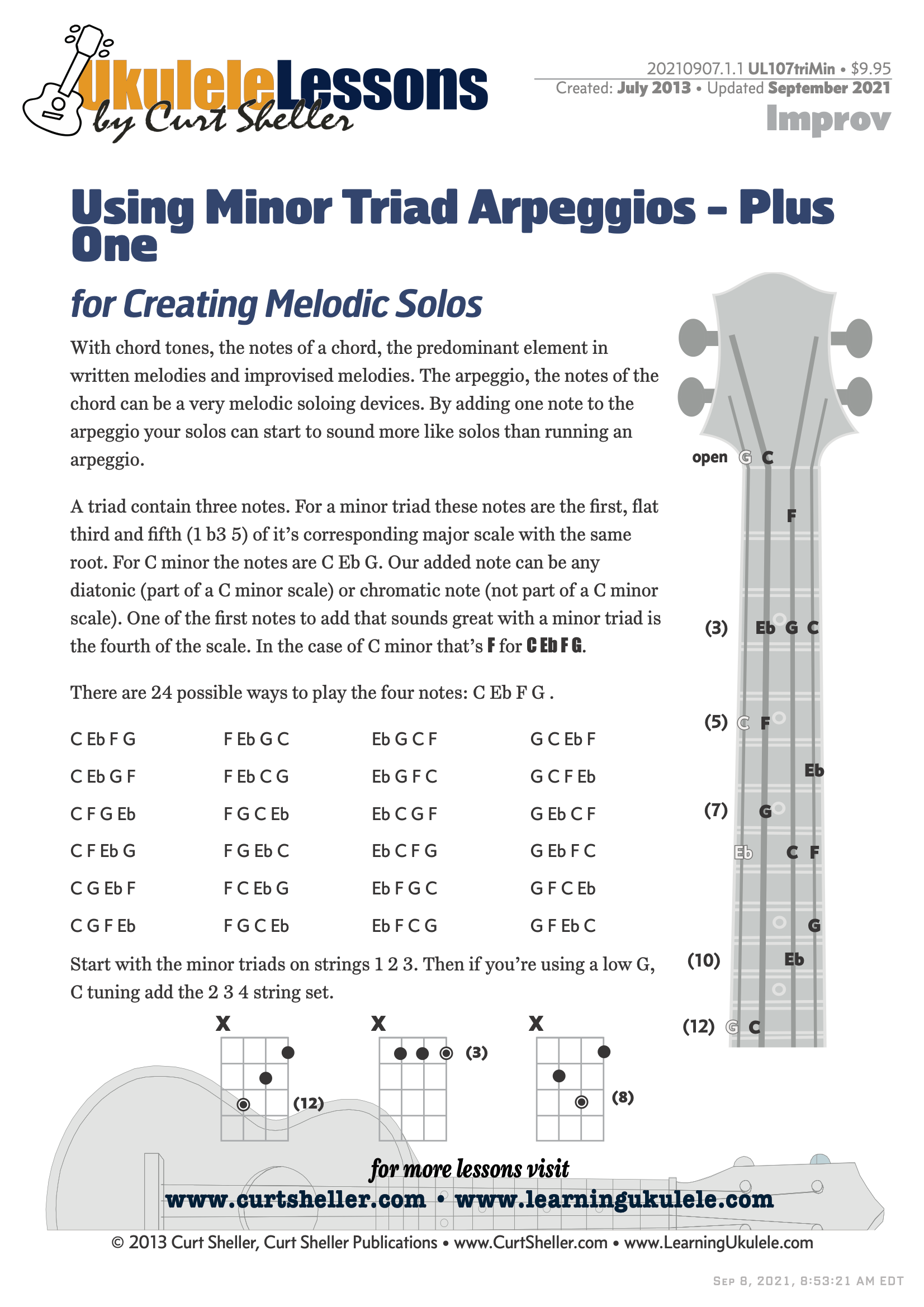
Using Minor Triad Arpeggios - Plus One for Creating Melodic Solos. With chord tones, the notes of a chord playing a predominant role in writing and in and improvised melodies. The triad plus one additional note is a great melodic device for creating melodies - either written or improvised.
Core `Ukulele Chords, Traditional and Contemporary Triads.

QuickStart Scale Arpeggio Fingerings for Ukulele - Triads is a concise, well organized book ideal for any ukulele player beginning to explore the ukulele's full potential as a musical instrument. Arpeggio Fingerings for Ukulele - Triads keeps a sharp focus on essential arpeggios and their fingerings. All material is covered in every key.

Finally, learn the names of the notes of the ukulele fingerboard in C tuning .

Learn the six fingering principles to navigating the ukulele fingerboard. Fingering is one of the most universal topics. Book: Six Secrets of the Ukulele Fingering

Harmonic Analysis is the understanding of the functional sequence of chords. It is the process used to analyze the harmonic structure of a progression, song or composition. Book: Harmonic Analysis for Scale Selection and Chord Substitution

Learn to read single note melodies in the first/open position is a lot easier than you might think. Book: Ukulele – Reading Music Series – Primer

An organized collection of daily practice and reference material for the contemporary ukulele player for developing the vocabulary and knowledge necessary for single note playing. Book: Daily Practice Material for the Contemporary Ukulele
Checkout the Books & Reference Charts for additional Handy, Dandy Reference Charts.

Ukulele Fingerboard Chart for C Tuning, Low or High G – G C E A

Ukulele Fingerboard Chart for G Tuning, Low or High A – D G B E

A handy reference chart of all 15 major and relative minor key signatures. US Letter 8.5 x 11 sized (ANSI-A), A4
Checkout the Books & Reference Charts for additional Handy, Dandy Reference Charts.



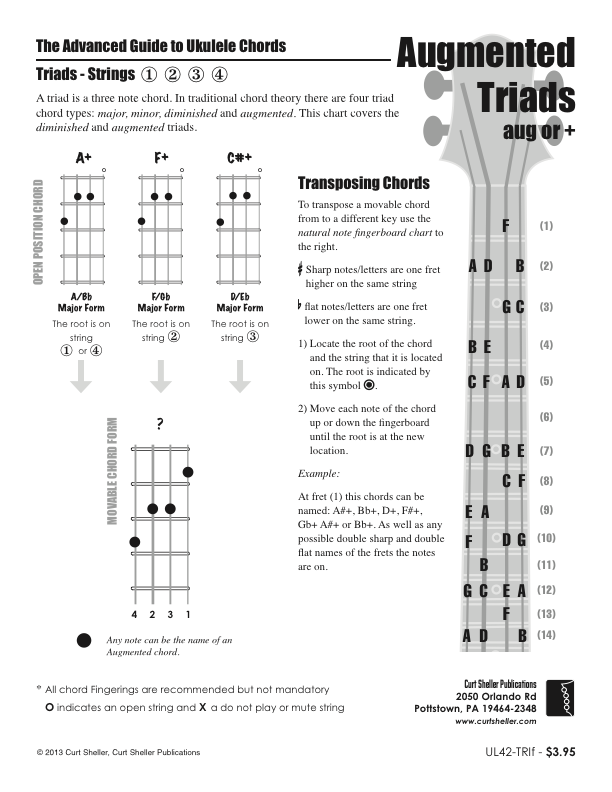

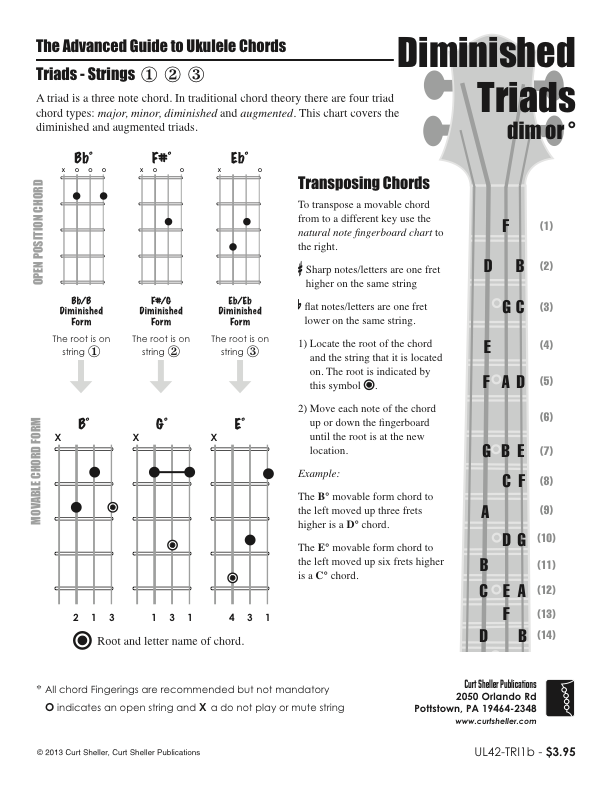
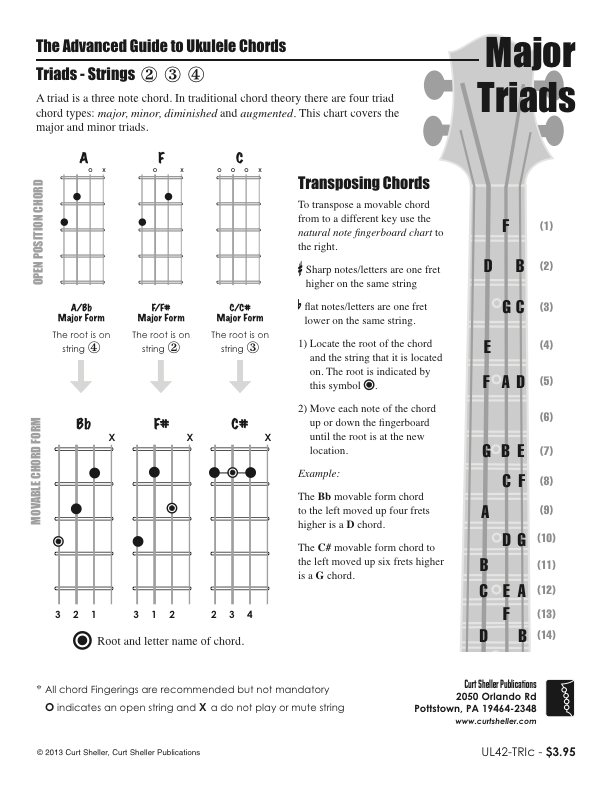
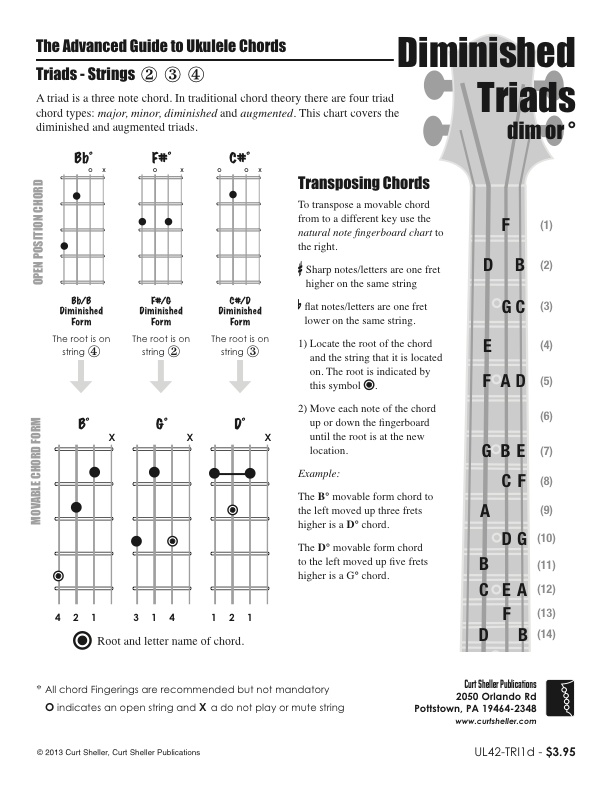
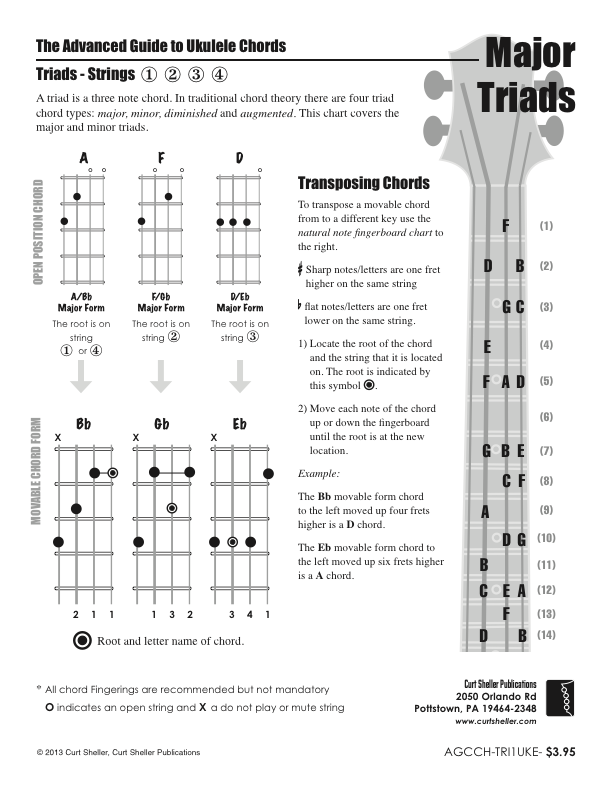



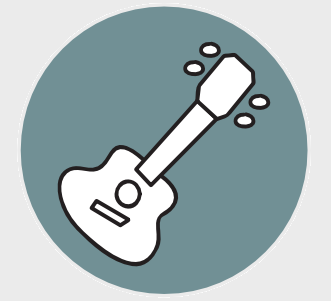
.jpg)